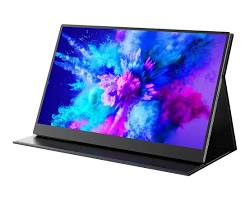The new phenomenon in the ever-evolving display technology is the mini-LED, which is going to change the manner in which we view visual content. This technology is no buzzword anymore as we move into 2025, but it is a major revolution that is shaking the monitor and TV industry. This article will explore the concept of Mini-LED and its increasing significance in the digital world.
Understanding Mini-LED Technology
Mini-LED is a back-lighting method based on the use of thousands of tiny LEDs (under 0.2mm in diameter) in order to light LCDs. Mini-LED displays have a far greater density of miniature light sources, unlike traditional LED displays that use far fewer larger LEDs, and can provide much closer local dimming areas, such as thousands.
This greater control of dimming, providing Mini-LED displays with deeper blacks and brighter highlights, dramatically improves the contrast ratios. What comes out of this is the image quality that is almost OLED displays, but with the burn-in risk being eliminated, and possibly at lower costs of production.
Why Mini-LED Matters in 2025
Mini-LED technology can hardly be overestimated in 2025. Display technologies will be forced to keep up with the visual quality of content creators as they push the limits of visual quality with 4K and even 8K resolutions. Compared to OLED, mini-LED has many of the same restrictions as traditional LCDs; it is a cheaper option that is more affordable.
Mini-LED is an enjoyable alternative to professionals who need more colour precision and contrast, including video editors and photographers. The better HDR performance and response times are enjoyed by gamers, and an overall better contrast and brightness are enjoyed by everyday users.
Mini-LED vs. Other Display Technologies
Compared to the more conventional LED-LCDs, Mini-LED provides an incredibly better contrast and HDR performance with its many local dimming zones. Although OLED still has a lead in regard to perfect blacks and infinite contrast, Mini-LED displays can reach higher brightness levels, so they are more adapted to bright conditions.
To the buyer in need of a mini LED portable monitor, the technology is a great balance between the quality of the desktop and a form factor that can be easily transported..
Applications Across Different Devices
The mini-LED technology has been implemented in a range of products, including the more expensive television sets, professional monitors and portable screens. Mini-LED is an especially disruptive technology in the portable monitor market, which allows users to enjoy high-quality images wherever they might go.
A mini-LED-powered portable 4k monitor can provide a gorgeous picture previously attainable only by larger, more cumbersome monitors. This has created enhanced opportunities for professionals requiring colour accuracy and contrast when working away or travelling.
Product Recommendations
UPerfect Monitors
Uperfect 15.6″ Mini-LED Pro Monitor
The monitor includes more than 1,000 local dimming zones, 1000 nits of peak brightness and provides an extraordinary contrast and colour fidelity. The portable nature of this device is ideal with professionals who require high-end functionality in a compact body without reducing visual quality.
Uperfect X Pro Mini-LED 4K Monitor

Mini-LED technology with 4K resolution means that this monitor has a gorgeous display and is able to reproduce colours as accurately as possible. Perfect with the content makers, it offers the best visual quality, yet is portable, meaning you will be working effectively without losing performance or clarity of the screen during the journey.
Uperfect 16″ Mini-LED Gaming Monitor
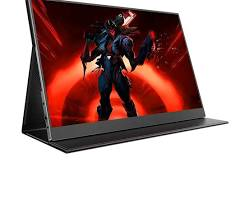
Having a 144Hz refresh rate and mini-LED backlighting, the model is a travel monitor that is best suited to gamers who do not wish to sacrifice visual quality. Its portability and performance are ideal for making it immersive to play anywhere and provide vibrant colours and immersive gameplay.
Other Brands
ASUS ProArt PA279CRV
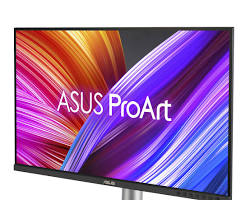
This 27-inch 4K Mini-LED display is designed to meet the needs of the creative professional audience, as it has 576 local dimming zones and 99% DCI-P3 colour coverage. It guarantees high-quality colour precision and contrast and would be best suited where a perfect visual depiction in a workplace is needed..
Dell UltraSharp U3224KB
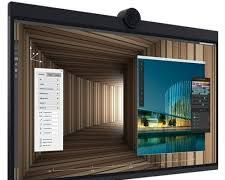
It is a 32-inch Mini-LED 6K monitor, 2,000 local dimming zones and the most advanced professional monitor. It also offers unequalled detail and contrast, suited to creative work of high-end use and professional use.
LG 32GQ950-B
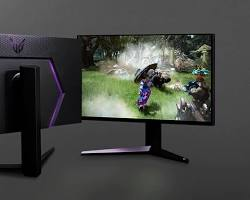
This is a 4K gaming monitor, which is 32-inch in size, with a Mini-LED backlight, 144Hz refresh rate, and NVIDIA G-SYNC. It offers a good gaming experience, and it has bright graphics; thus, it is one of the most recommended games among gamers who are in need of high performance and good quality images.
MSI Prestige PS341WU
It is a 34-inch ultrawide mini-LED technology display, and it has more than 500 local dimming zones. It is the best multitasking and media consumption device and offers a viewing experience as it has excellent contrast and colour accuracy, therefore, being very productive and entertaining.
The Future of Mini-LED Technology
Mini-LED technology is still in the development phase as we head later into 2025 and beyond. The technology is becoming more affordable to mainstream consumers as manufacturers are trying to add more local dimming zones and cut costs. We also have innovations in power efficiency, and that is specifically critical to portable devices.
Summing Up
The mini-LED technology is an essential breakthrough in the quality of displays, and it presents a good alternative to the conventional LED-LCD and OLED displays. Offering a better contrast, brightness, and colour precision, Mini-LED is set to be the standard of the high-end display in many categories. Be it a professional content creator, a serious gamer or a simple user who admires first-rate visual quality, the Mini-LED technology in 2025 delivers an experience that could not have been imagined previously in a portable form factor. As technology becomes more affordable, it will become increasingly common in both large and small devices.

